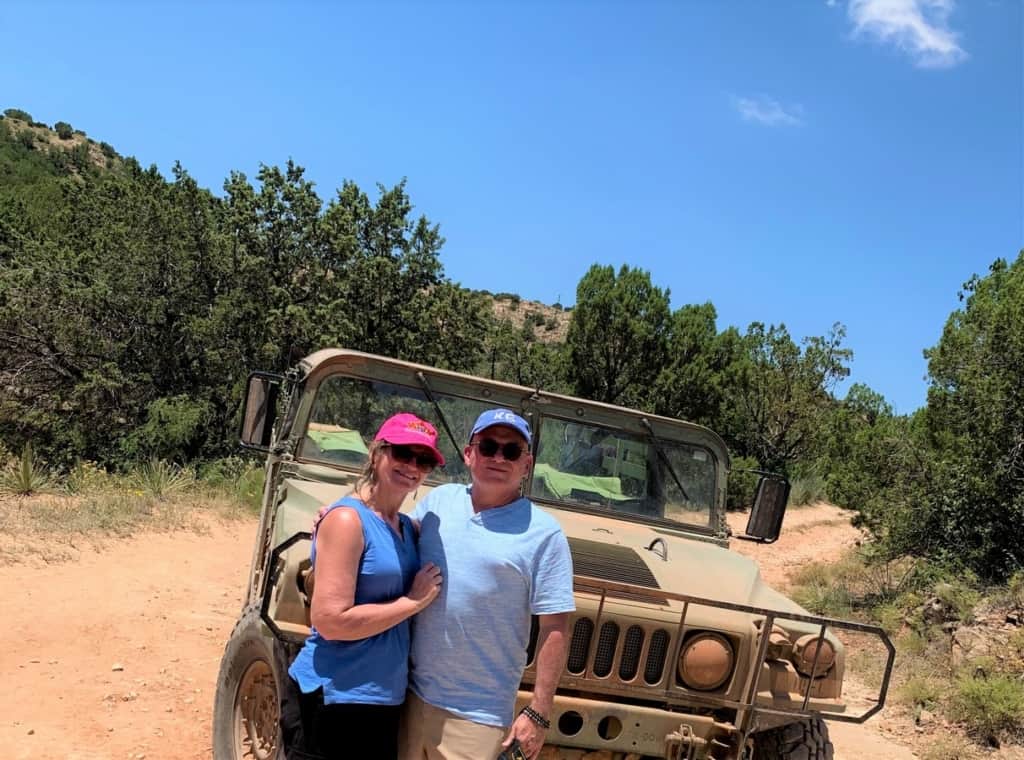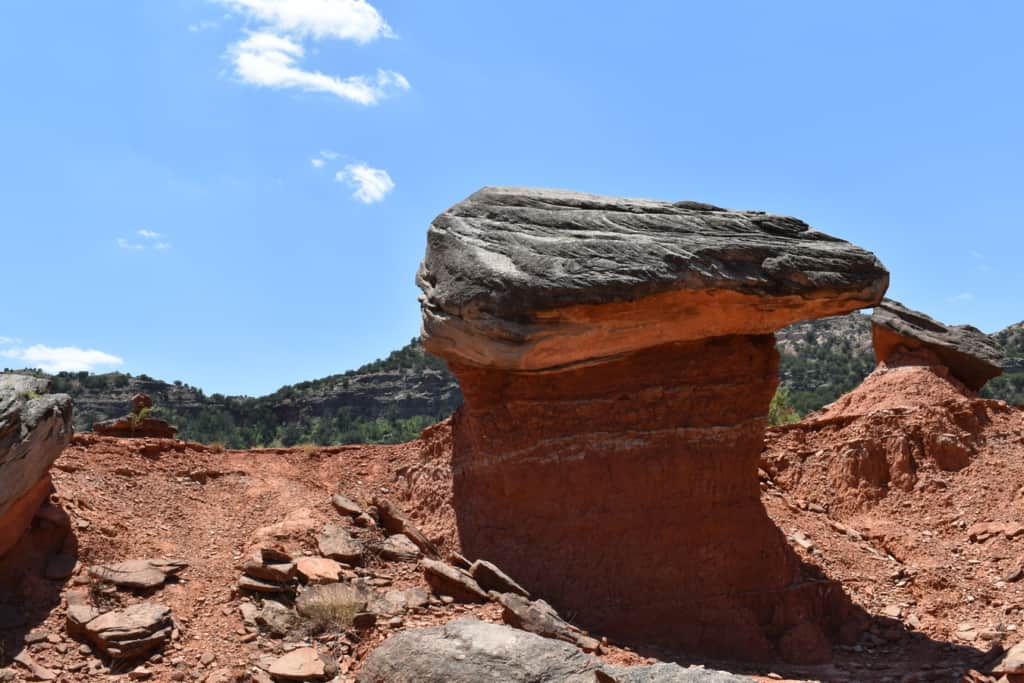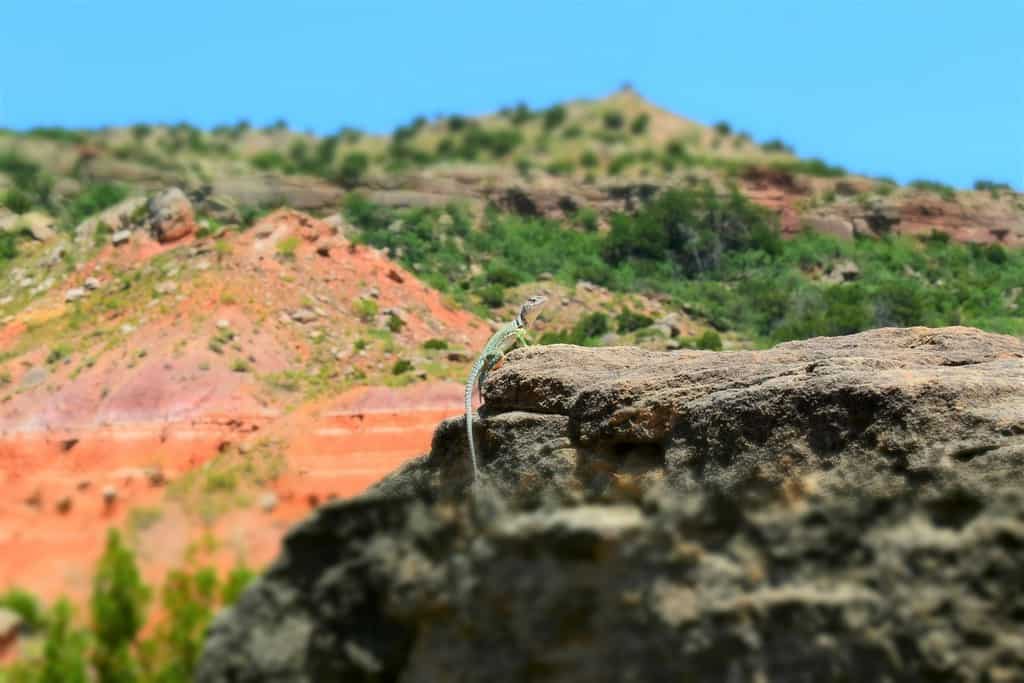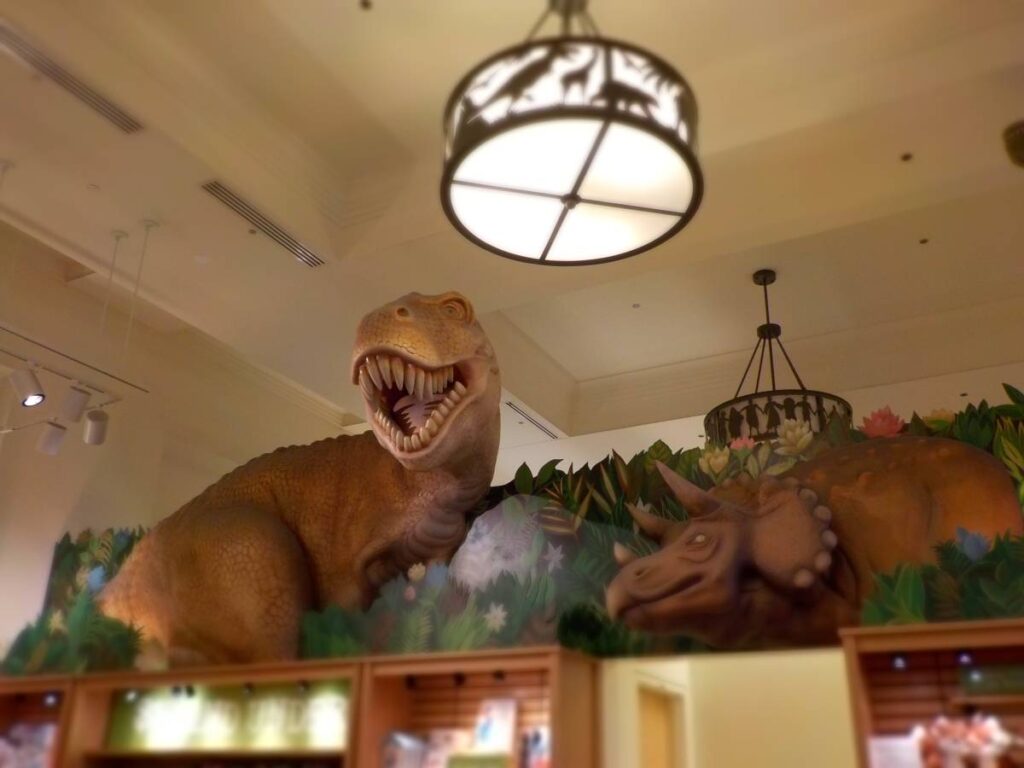Everyone knows that the Grand Canyon is the largest in the United States, but you do you where the second largest is at? You can imagine our surprise, when we discovered that it lies just south of Amarillo, Texas. Yes, the panhandle plains are home to Palo Duro Canyon, which is HUGE! While our visit to this Route 66 city was chocked full of stops, we knew that we had to set a day aside just to explore this canyon area. What better way to see it up close than a jeep ride right down into it? Our friends at Visit Amarillo arranged a time for us to take a wild ride at Palo Duro Creek Ranch.
We want to thank Visit Amarillo and Palo Duro Creek Ranch for their hospitality. Rest assured all opinions are our own.

The Ranch
During our research for this visit, we had the opportunity to connect with a bunch of people from the region, through Facebook. When we surveyed them on places that were “must-sees”, Palo Duro Canyon was at the top of the list. To be honest, we had never heard of it. After Googling it, we were dumbfounded that such a natural wonder could stay so well hidden from public knowledge. We knew that we had to help get the word out about this fantastic destination. One day earlier, we had been in Canyon, Texas to tour the Panhandle-Plains Museum.
Being so close to the canyon, we expected to see it. Obviously, we were completely wrong. After all, the canyon is lower than the ground around you, so it doesn’t show on the horizon as mountains would. It was apparent we would have to wait. After a quick run down the interstate, we jumped on Highway 217, which leads to Palo Duro. It was still about 10 miles to our destination, so the anticipation was really building. While the elevation is greater on the high plains, the flatness reminded us of our home state of Kansas.
By the time we saw the dirt road turn-off for Palo Duro Jeep Tours, our anticipation had grown to peak levels. To think that we would have the chance to spend two hours seeing the canyon up close was so thrilling. Oh wait, now we had to traverse the dirt road to the ranch. Oh well, it just meant that it built the suspense even more. Soon enough, we turned a bend in the road, and the ranch came into view. It reminded us of something right out of the Old West, and we could hardly wait to meet the staff of Palo Duro Creek Ranch.

John Knows
Our arrival was quite timely, as our guide was all ready to get going. After brief introductions, we loaded into the dust-covered Hummer. John would be leading us out into the field, and we were assured that he really knew his stuff. Our group included another couple with their son in tow. With John in the driver’s seat, there was plenty of room for the five us in the open back. As the instructions were given, we made note of the various handles and bars that would become much-needed supports for our excursion.
The tour started easy enough, with a short run to the edge of the canyon. During our tour, John would take periodic stops to tell us some of the histories behind Palo Duro Canyon. He would also serve as the staff photographer for the group, as he was happy to take pictures for everyone. Let me tell you, he knew all the good places to pose us, as long as we were willing to stand near a canyon edge.
Palo Duro Canyon was formed by the Prairie Dog Town Fork of the Red River, as it flowed across the land. The erosion has left an assortment of canyons, bluffs, caves, and exposed the colorful layers to the naked eye. His descriptions of what we were going to see just made us that much more anxious for the experience.

Steep Descent
As we arrived at the lip of the first descent, all of us were taken back with the beauty that unfolded before us. It is hard to imagine how one stream could do so much work. We held on, as John edged the jeep down the steep ravine. In places, the tires must have been skirting the edge, but it quickly became apparent that John knew this path like the back of his hand. Of course, he didn’t mind peppering in a little humor at the perfect times. We were barely into the tour, and we were already warming up to our guide at Palo Duro Creek Ranch. Let’s just hope that he kept his cool under the hot Texas sun.

Natural Beauty
After this first round of drop-offs, we arrived at an area that was used by cattle for grazing. While the first inhabitants of the canyon had been native Indians, European explorers would not discover these lands until Coronado came through in 1541. His group would meet the Apache tribe, who would eventually be uprooted by others. Once horses became part of everyday life for the Indians, the Kiowa and Comanche were able to force the Apache out of the canyon.
In 1852, a military group was assigned the task of finding the source of the Red River. This would lead to the rediscovery of Palo Duro Canyon. By 1874, the military had begun an operation to remove the native Indians from the area and move them to the reservations in Oklahoma territory. We had learned quite a bit about the Indian relocation from a visit to the Oklahoma History Center. With the land cleared, it was prime time for new settlers to move in.
Charles Goodnight would be one of the first, when he established his JA Ranch, in 1876. It was hard to imagine the idea of cattle grazing on this hilly terrain, but it reminded us just how hardy the Texas longhorn can be. John informed us that we were coming to an area that would be prime for some photo opportunities. That was good news, as we were all just getting over our white knuckle experience of the first descent.

Pit Stop
John came to a stop along the trail and invited us to get out and stretch our legs. He continued our history lesson, as he told us about how the native Indians were brought to submission. In the late summer of 1874, members of four tribes had sought refuge in the canyon. With a stockpile of supplies, it looked like they were set to hold out through the winter. Twelve companies of cavalry were sent in to root them out. Splitting into three columns, the cavalry was able to force the Indians to abandon their supplies and retreat.
By capturing nearly 2000 of the Indian’s horses, it left them mostly on foot. This dealt a blow that they would not recover from. The Indians would eventually return to their Fort Sill reservation, as they no longer had the ability to survive the winter. After finishing his tale, John escorted us to the edge of the bluff, which overlooked the canyon floor. Of course, first, we posed for a few photos with the horsepower that brought us to this point.
Height Awareness
The edge of the bluff offered some unique viewing opportunities. What we discovered was that I was the only one who didn’t mind the height. Seeing this box canyon firsthand made it easy to understand why the native Indians had chosen this area to hole up. There are so many points that people could hide, and navigating them looked rather difficult. Since my co-participants wouldn’t hazard the approach, I decided to record some video for them to see the drop-off. Our visit to Palo Duro Creek ranch was turning out to be quite an experience.

Untold Beauty
When we reached the edge of the bluff, we found that the valley laid out before our eyes. All of the colors, found in the various layers of soil, were so amazing. Here and there we could make out small geological formations, which John promised we would be seeing up close later in the tour. Even in the hot July summer, the greens were popping all over the canyon floor. Time to get back to the jeep and continue our journey.

Who Do Hoodoo?
Once we made it to the canyon floor, the amazement just kept getting bigger. Here and there we would spot a skink or lizard sunning itself on a formation. While we had seen a few caves that were eroded in the hillside, now we were up close with some hoodoos. These fascinating formations are created when a hard rock sits atop a softer under-surface. Over time, erosion from the elements will wear away the surrounding soil. What is left is these chimney-like structures. Sometimes referred to as tent rocks, these are commonly found in canyon settings.
The layers of color we were seeing are created from the various ages where new material was deposited. From our visit to the Panhandle-Plains Museum, we knew that this region had been a swamp at one time. This is the section where the red coloring is found. It comes from the oxidation created in the tidal pools that would have been found long ago. Seeing the color bands from this angle made it easier to understand the passing of time.

Finding Shade
With our tour now passing the two-hour point, we knew our time was limited. John was happy to make some suggestions for more photo opportunities. Posing under one of the hoodoos allowed us a brief break in the rare shade found in Palo Duro Canyon. A few more minutes exploring this unique landscape, and it was time to load back into our all-terrain chariot. This was one of those experiences that began forming as an article in my mind, even as we were still in the canyon. We knew that we had to pass along this amazing destination to all of you so that you could see it for yourself.
Heading Back Up
As we made our way back up the bluffs, we found ourselves back in white knuckle situations. It seemed easier to accept driving along drop-offs when you are moving away from them. While Crystal focused on watching where we were headed, I took the opportunity to look back at where we had been. It still amazes me, when I watch this video, at just how steep the climb was that we had just made.

Happy Campers
Looking back at our experience at Palo Duro Creek Ranch, it ranks as one of those unforgettable memories. While the amount of our exertion was low, it had still offered a few heartbeat racing moments. In the end, we had made some new friends, including our amazing tour guide. John had made our journey memorable by making sure to take the time to show us all of the nooks and crannies that he has discovered over his time driving guests through the canyon. His capable driving skills, great backstories, and friendly humor had endeared all of us to him. You can bet we highly recommend him for a tour guide when you visit Palo Duro Creek Ranch. Now which of you would be brave enough to peek over the edge of the cliff?






That is quite a discovery! We were in Amarillo in 2011 but never found out about this. It is regrettable because the State Park has 30 miles of trails and lots of campgrounds where we could have parked our RV!
Perhaps another round of visits is in your future.
That was a cool tour and visit to this area, thanks for sharing the 2nd largest canyon in the USA
Hope you get a chance to see it firsthand someday.
I hadn’t heard of Palo Duro Creek Canyon either. But we were just as surprised to see the dramatic landscape–canyons, hoodoos, etc–in and around Big Bend National Park. I guess the 8 mile long Santa Elena Canyon there is along the Mexican border, so maybe doesn’t rank in U.S. canyons.
It sounds like another park we need to explore. Thanks.
I’ve never been to Amarillo, but Palo Duro Creek Ranch certainly has piqued my interest! I love adventure, so exploring the canyon is right up my alley, not to mention the gorgeous photo ops!
Patti, I think you would love it. Be sure to come back and see more articles about Palo Duro Canyon over the next few weeks.